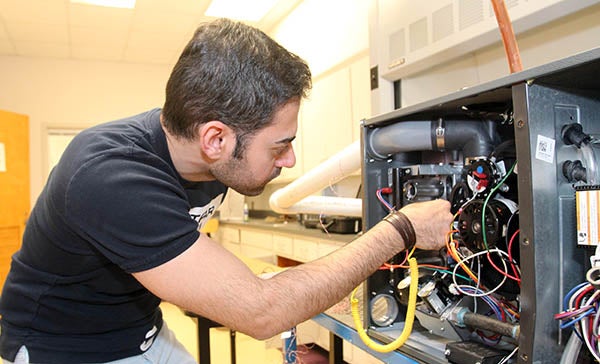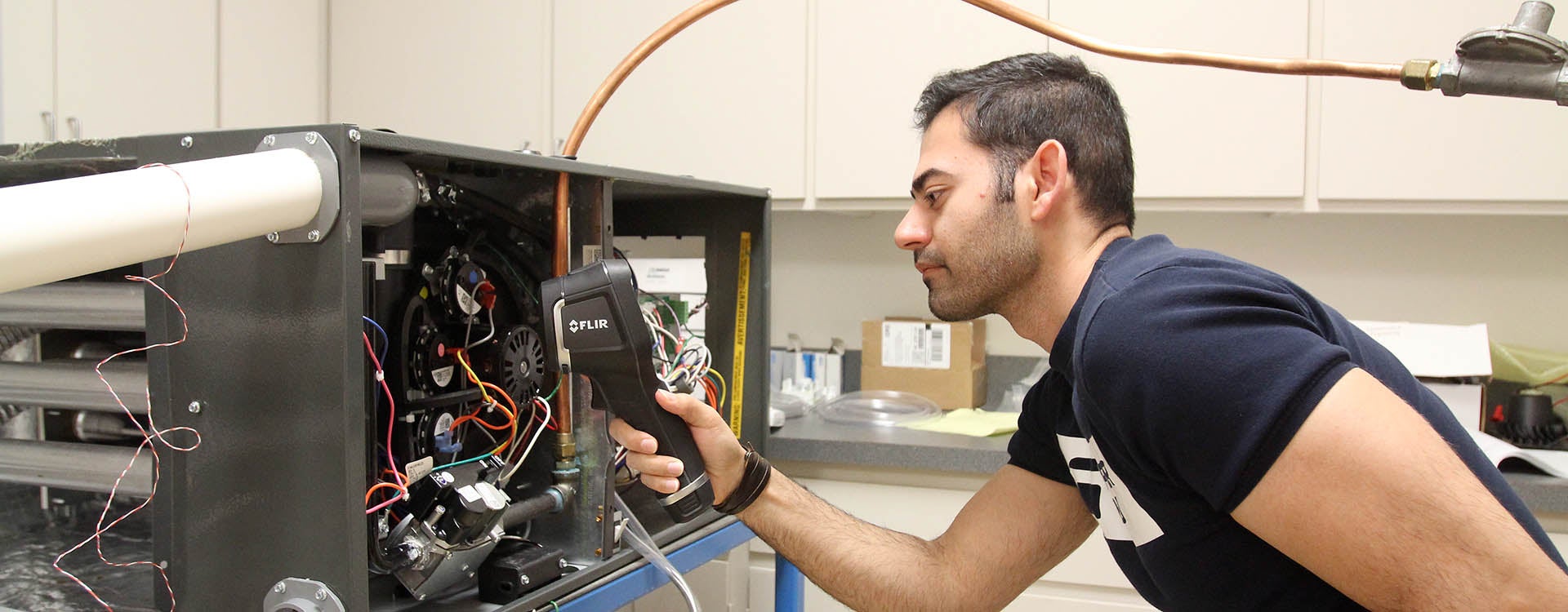Green Heat
Graduate student using green hydrogen to reduce furnace emissions
While running a natural gas furnace will warm you up on a cold night, it also can warm the earth with greenhouse gas emissions. East Carolina University’s Behzad Zeinolabedini would like to change that, essentially creating green heat.
The mechanical engineering master’s student has been experimenting with a mix of green hydrogen and natural gas as part of a research project to reduce emissions in furnaces in a lab in the Rivers Building.
“The point of this research is to get a net zero carbon emission,” Zeinolabedini said.

Behzad Zeinolabedini checks a furnace in a research lab in the Rivers Building as part of his work to reduce greenhouse gas emissions.
He said hydrogen produced by using renewable energy is considered green. When the furnace uses less natural gas, carbon dioxide and other greenhouse gas emissions are reduced.
Zeinolabedini said the key is to create a mixture of green hydrogen and natural gas so that emissions are reduced, yet the infrastructure of the furnace does not need to be changed. That would mean old furnaces could still be used, but with fewer emissions.
“In this way, we can use the regular furnaces, the regular equipment that’s in our buildings now, so there’s no additional cost in that,” he said.
Zeinolabedini is using infrared pictures and thermometers to measure temperatures inside the furnace, an air flow meter to calculate the air velocity and flow rate from the furnace and a gas analyzer to measure emissions.
He is using various percentages of green hydrogen to discover the most efficient mix to reduce emissions. At 15% green hydrogen, the results look promising as compared to using natural gas only, he said.
“I observed a minor decrease in flame temperature at higher fuel flow rates with hydrogen blends. Also, I observed a decreased heat release and thermal energy transfer within the furnace structure with hydrogen addition,” he said. “Moreover, I observed reduced CO (carbon monoxide), NO (nitric oxide) and NOx (nitrogen oxides) levels demonstrated with hydrogen blends.”
Zeinolabedini didn’t come upon the project by accident.
“Before joining this program, I was working as an HVAC engineer for about five years,” he said. “I decided to work on this research because it was in line with my work experience and my background, and also my interest.”
He’ll get his master’s in May and then get to work, using his degree in a similar manner to his research project.
“I’m going to work as a mechanical engineer in an engineering firm, so we make buildings perform better,” he said. “It’s similar to my research. I’m going to work with different HVAC systems, all kinds of heating systems, cooling systems and ventilation systems.”
ECU’s Department of Engineering includes graduate degrees in biomedical engineering and mechanical engineering and an undergraduate degree in engineering with concentrations in biomedical engineering, biochemical engineering, electrical engineering, environmental engineering, industrial and systems engineering, and mechanical engineering.
